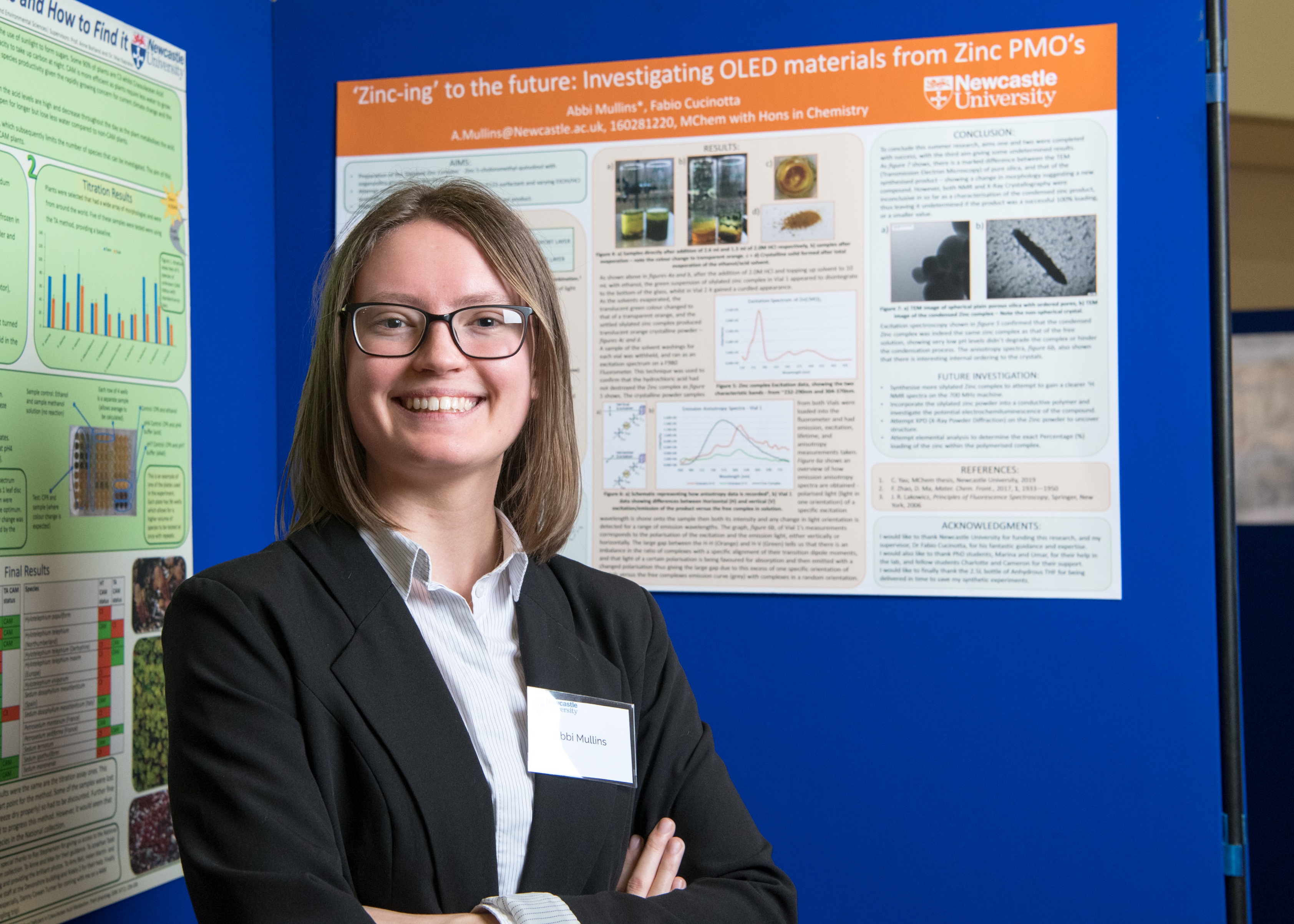2019 participants
 Abbi Mullins
Abbi Mullins
OLEDs – Organic light emitting diodes – are fast becoming the screen displays of choice in modern technology, and new emitting layer material is required to drive innovation.
By utilising classic/modern synthetic chemistry routes a modified ‘host-guest material’ building block was synthesised as a potential OLED emitting layer. Through reacting a polymerizable silica support structure with a Zinc (ii) complex, the intention was to transfer the electroluminescent property of the Zinc (ii) complex to the 3D silica structure to give a new Periodic Mesoporous Organosilica polymer. The expected transferred property given to the silica-Zinc polymer was hoped to be used as an energy vector to a guest molecule that can be included to sit in the silica-zinc polymer’s pores.
The product was characterised via TEM, NMR, And UV-Vis/Fluorescence spectroscopy.
Funding source: Newcastle University
Project supervisor: Dr Fabio Cucinotta
